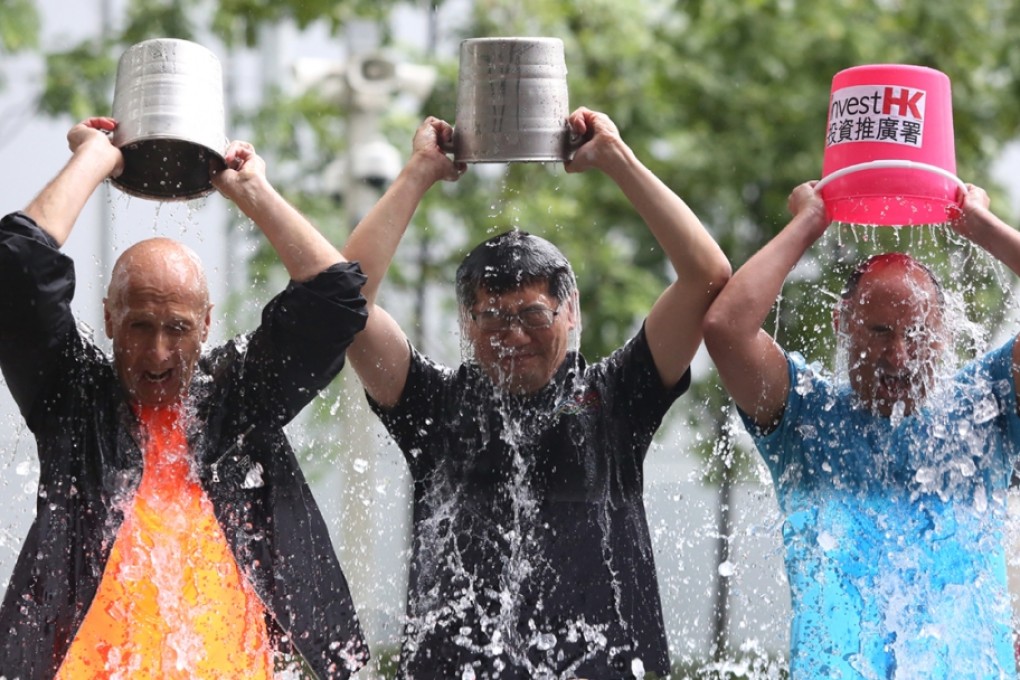As I see it | From splash to backlash: in defence of the ice bucket challenge

By now you are justifiably sick of watching videos of friends and celebrities dumping icy water on themselves. Search the word #icebucketchallenge on Instagram and you will get over a million hits. The latest social media phenomenon, intended to raise awareness for ALS (also known as Lou Gehrig’s Disease), began in June and had raged to an all-out Internet frenzy by mid-August. Gangnam Style is so two years ago.
The figures are staggering: in the U.S., the challenge has raised nearly US$80 million (HK$620 million) for the ALS Association in just a few weeks. 2.4 million videos have been shared on Facebook and 5.5 million mentions have been logged on Twitter. Business schools around the world are re-writing their Marketing 101 course materials to analyze what many believe to be the most successful chain letter stunt in history.
The campaign has spread from a small coastal city in Florida to virtually every corner of the world – except perhaps North Korea and the Ebola-hit West African nations. The challenge now comes in many shapes and forms. In India, for instance, where drinking water is scarce, participants give away buckets of rice to feed the hungry. Palestinians in war-torn Gaza dunk rubble on themselves to spread awareness about Israel’s indiscriminate bombings.
In Hong Kong, where fads and crazes catch on faster than a minibus on the Tuen Mun Highway, ice bags are flying off the shelves at convenience stores and supermarkets. The lack of open space is no deterrent to trend-seeking citizens. Thousands have done it the Hong Kong way by standing in their telephone booth-sized bathrooms at home and getting doused next to shampoo bottles and hung towels. Even camera-shy government officials are showing an unusual interest in the publicity stunt, perhaps at the behest of their boss C.Y. Leung, who is grateful for any media distraction in this summer of discontent.
To date, the ice bucket challenge has raised HK$15 million for the Hong Kong Neuro-Muscular Disease Association (HKNMDA). The group, which provides support to ALS patients and their caretakers, has been caught completely off-guard by the craze. With only two full-time staffers, the small NGO outfit is inundated with a deluge of donors’ inquiries and an massive influx of new cash. It is nevertheless a problem that many charitable organisations wish they had.
As is the case for any high-profile campaign, success is inevitably followed by a backlash. Naysayers ranging from regular netizens to newspaper columnists and medical doctors have come out swinging at the ALS challenge. They have focused on five main criticisms: (1) the waste of fresh water, (2) the waste of money on ice, (3) the health hazards of ice bucketing, (4) the potential cannibalising effect on other charities, and (5) a 21st Century social phenomenon called “slacktivism.” Slacktivists are those who make a minimal effort to help a social cause, such as by sharing a Facebook post or signing an online petition, instead of donating money or volunteering their time. Recent examples includes the #StopKony online campaign against Ugandan war criminal Joseph Kony and the #bringbackourgirls petition to rescue the kidnapped school girls in Nigeria.
To show that these criticisms are all a bunch of sanctimonious baloney, I shall rebut them one by one.
